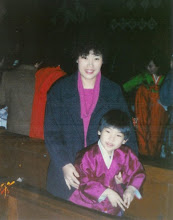With the first time serving a jury, I was filled with half doubt of the proficiency of jury system and half excitement of experiencing the court that I need to do prior to a law school.
Similary to my mindset, the court was half scarily apprehensive and half classically structured because it was of course reflected by my eyes.
What I found about the jury selection process was surprisingly unfair; among about 60 potential people, they first pick 12 people and then as they 'excuse' anyone of them for whatever legitimate reason, they reselect to fill the empty seat from the pool. So there is a high chance of "first come, first served".
For those of you don't want to spend next couple of days or weeks sitting at an old house and listening to the more like same stories, you can always come late.
I was numbered 27 initially, then as pre-selected jurors got deselected, I was picked as a juror number 1. I knew I was sort of auto-admit once I get picked due to my background and my vested interest of serving a civil duty, which tells that I'm an average-Joe.
Hearing the testimonies from each side for two consecutive days wasn't the most interesting part of the job, but after all is done, I figured it was worth the time because not only it gives you different angles of the story that we are trying to re-construct using a fact-finding skill, but also you can clarify the truth by factoring out the commonalities of the stories told by many witnesses.
During the deliberation, stuck in the jury room just like a movie, we all wanted to say something.
The simple civil matter went on more than 2 hours of deliberation. However I personally thought the plaintiff deserves some time from each one of us since she's been waiting this trial since 2005, almost 5 years.
The biggest thing as we all unanimously agreed was the deficient job of the plaintiff side.
For this civil case, the burden of proof is invariably on the plaintiff's shoulder, the lawyer should have better prepared for the court subpoenaing witnesses, providing only the relevant documents and expert/witness testimonies or documents bridging the gap between each evidence.
We were all convinced that the plaintiff got injured from falling, which possibly caused by the defendant's negligence. Here is the chasm the plaintiff's lawyer should have proved.
If I were him, I would either find a witness who can definitely testimony one saw the plaintiff stepped into the hole and fell instead of saying I only saw her fell.
If not found, then here is an alternative, bring in the medical or/and mechanical expertise into a court room that the plaintiff's injury is most likely caused by stepping into a hole and at the same time ruling out other possibilities of getting injured such as slipping through wet steps with slippery sandals on.
The other most important gap he failed to connect was how the plaintiff's injury was related to her fall due to the hole. Although the lawyer submitted 200 pages of medical reports, mostly from ER, we couldn't find any single page pertaining to her injury caused by stepping into a hole.
Rather than helping revealing the plaintiff's story and building her credibility, it undermined her testimony since the ER doctors couldn't find any significant damages from her joints and ankles.
If one wanted to prove the injury could get developed over time, then sometime during the physical therapy, which was obviously taken place, she should have taken another X-ray or MRI with the second doctor's opinion regarding the symptom was slowly developed from the initial damage caused by allegedly stepping on a hole.
Mechanical engineering could also help how the consequence of her damage could be caused by her stepping into a hole and fell through the side steps.
Though the hole is not a significant contributor to her damage, if it acted as a trigger her to receive another, yet significant damage from falling into side steps, then it can be proved that the hole is accountable and thus the negligence of the landlord's failure to fixing the hole could be scrutinized.
With those issues still needed to be addressed, the case was finally closed.
I hope when I represent my client someday, I can put all these things together instead of filling something less important to occupy the minds of judges and jurors, which in turn have an adverse consequence.
Subscribe to:
Post Comments (Atom)

No comments:
Post a Comment